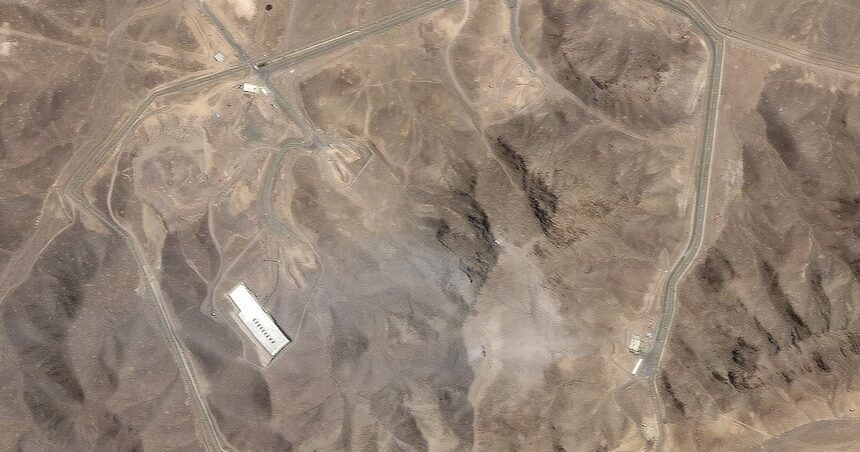The sound of fighter jets broke the pre-dawn stillness over Iran yesterday as American bombers struck three Iranian nuclear facilities, marking a dramatic escalation in the widening regional conflict. This direct American military action represents a significant shift in Washington’s approach to the Israel-Iran confrontation that has simmered for months alongside the Gaza war.
“The strikes were precise and targeted specific components of Iran’s nuclear enrichment program,” a senior Pentagon official told me during a background briefing in Brussels. “This isn’t about regime change. It’s about establishing clear boundaries for Iranian behavior.”
The operation hit facilities in Isfahan, Natanz, and Fordow – all critical nodes in Iran’s nuclear infrastructure network. Satellite imagery reviewed by independent analysts shows precision damage to centrifuge assembly buildings and power supply systems, rather than the underground enrichment facilities themselves. The U.S. Central Command confirmed 25 aircraft participated in the mission, launching from bases in Qatar and naval vessels in the Persian Gulf.
Iranian officials immediately condemned the strikes as “flagrant aggression” and promised a “proportional response.” Supreme Leader Ayatollah Ali Khamenei convened an emergency meeting of the Supreme National Security Council, while Foreign Minister Hossein Amir-Abdollahian requested an urgent UN Security Council session.
The military action comes after months of intensifying proxy conflicts across the Middle East. What began with Hamas’ October 7 attack on Israel has metastasized into a multi-front war involving Hezbollah in Lebanon, Houthi rebels in Yemen, and various militia groups in Syria and Iraq. Last week’s Iranian missile barrage toward Israel – which Israeli defense systems largely intercepted – represented Tehran’s most direct involvement yet.
Walking through a neighborhood in eastern Beirut yesterday, I spoke with Mohammad Khoury, a 62-year-old shopkeeper whose business has been devastated by the ongoing tension. “Every time we think it cannot get worse, it does,” he told me, arranging sparse merchandise on nearly empty shelves. “Now America bombs Iran directly? Where does this end?”
The Biden administration had previously relied on diplomatic pressure, sanctions, and supporting Israel’s defense capabilities rather than direct military engagement with Iran. This strategic pivot raises serious questions about America’s endgame in the region.
“The U.S. is walking an extremely dangerous tightrope,” Dr. Nazanin Shahrokni, an Iran specialist at the International Crisis Group, explained during a video call from London. “These strikes are calibrated to degrade Iran’s nuclear program without triggering all-out war, but miscalculation risks are enormous.”
Oil prices surged over 8% following news of the strikes, with Brent crude crossing $92 per barrel for the first time since 2022. Financial analysts at Goldman Sachs warned clients that further escalation could push prices above $115, potentially triggering global inflationary pressures at a time when many economies remain fragile.
The International Atomic Energy Agency (IAEA) confirmed its inspectors had been withdrawn from Iran before the strikes. Director General Rafael Grossi expressed “grave concern” about the situation and called for “maximum restraint” from all parties. According to the IAEA’s most recent verification report, Iran had already enriched uranium to 60% purity – just below weapons-grade levels – marking a significant violation of the now-defunct 2015 nuclear agreement.
European responses to the American action have been notably divided. While British Prime Minister Keir Starmer expressed “full support” for the operation, French President Emmanuel Macron called for “de-escalation” without explicitly endorsing the strikes. German Chancellor Olaf Scholz emphasized “the need for diplomatic solutions” during a press conference in Berlin.
Russia and China have both condemned the American action as a violation of international law. During an emergency UN Security Council session, Russia’s ambassador Vassily Nebenzia called the strikes “an act of aggression against a sovereign state” and warned of “unpredictable consequences.”
Standing outside the State Department yesterday afternoon, I watched as protestors from both pro-Israel and anti-war groups gathered, their competing chants creating a cacophony that mirrors America’s divided public opinion on Middle East policy.
The White House faces mounting criticism from Congress, with reactions falling largely along partisan lines. Senator Lindsey Graham (R-SC) called the strikes “long overdue” but “potentially too limited to achieve meaningful objectives.” Meanwhile, Representative Pramila Jayapal (D-WA) questioned the legal authorization for the action, stating, “The administration has not made a convincing case that this escalation serves American interests or security.”
Defense analysts caution that Iran maintains significant retaliatory capabilities despite the damage to its nuclear infrastructure. “Tehran has multiple cards to play,” explained Farid Senzai, professor of international relations at Santa Clara University. “From disrupting oil shipments through the Strait of Hormuz to activating sleeper cells against Western targets, or accelerating nuclear development at covert facilities.”
For civilians across the region, these strategic calculations translate into daily fear and uncertainty. In interviews conducted via secure messaging with residents in Tehran, many expressed anger toward both their government and the United States.
“Our leaders provoke these responses, then ordinary people suffer the consequences,” said Maryam, a 34-year-old engineer who asked I use only her first name. “But American bombs won’t make us safer or freer.”
As night falls across the Middle East, the question now becomes not if but when and how Iran will respond – and whether diplomatic channels can prevent a further spiral into the regional war that most civilians desperately hope to avoid.






